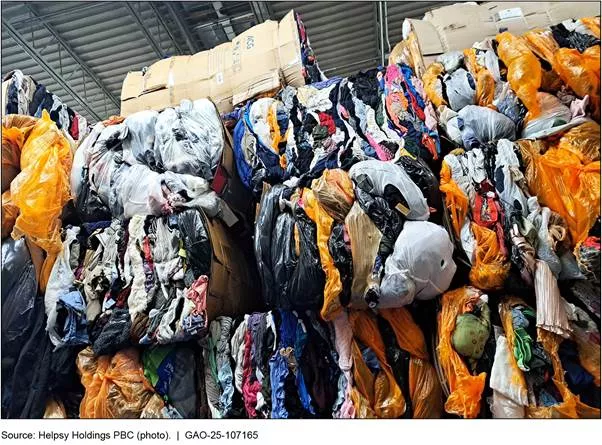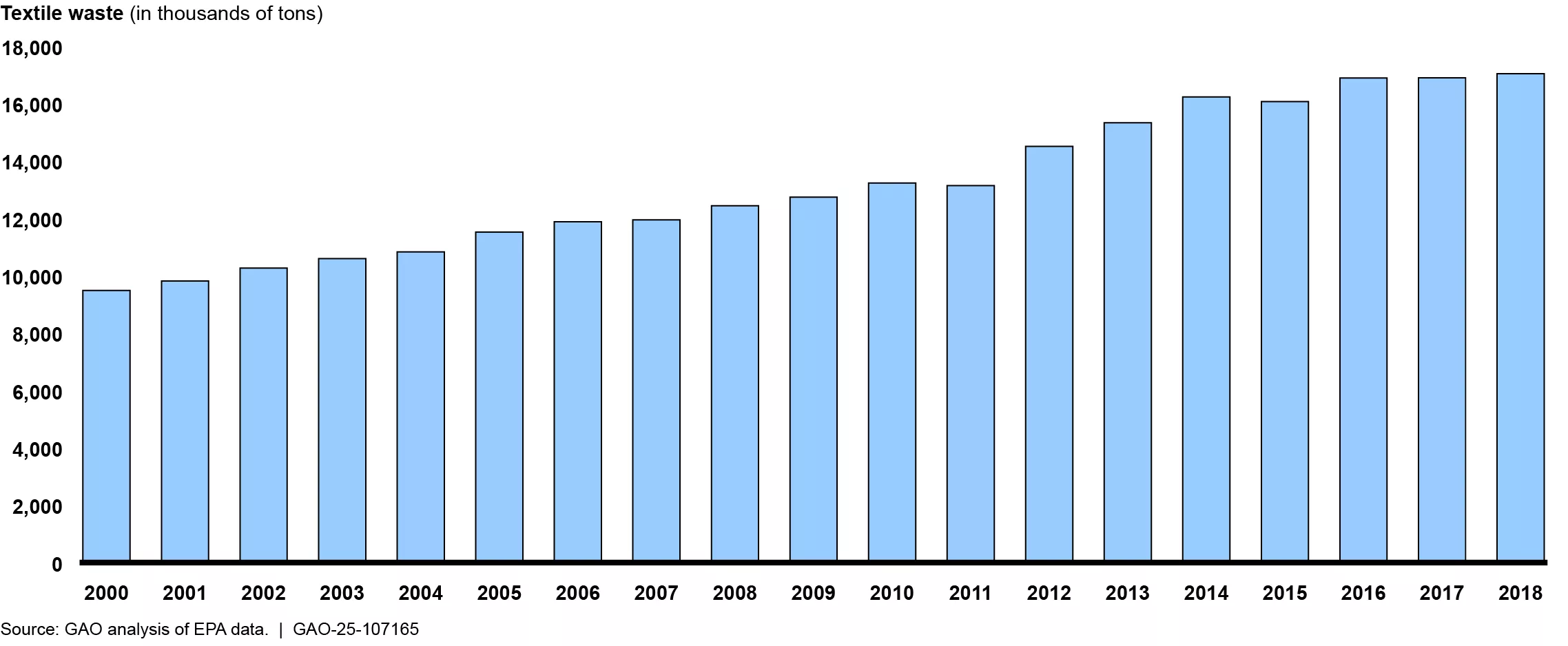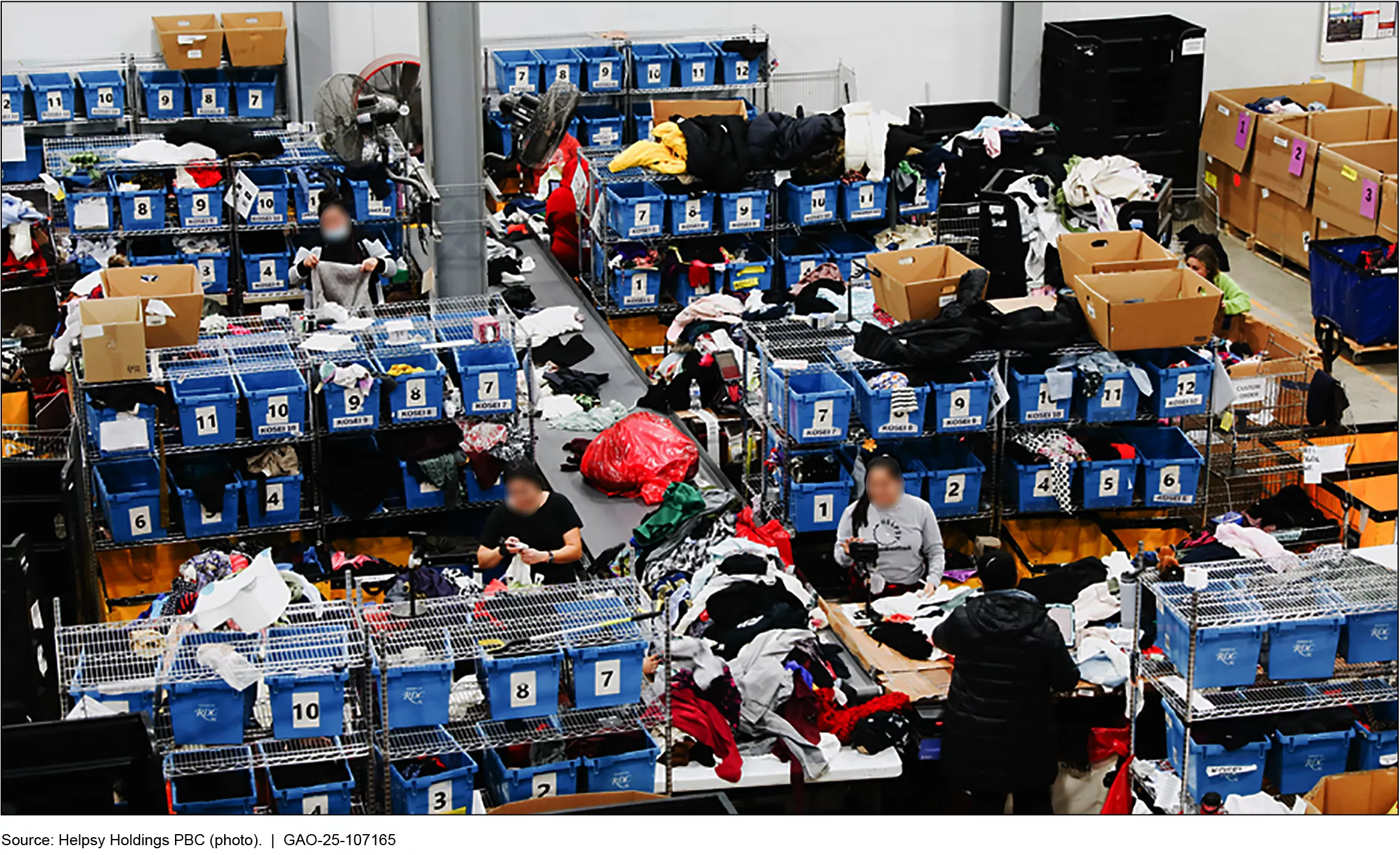Fast Fashion—Great for Your Wallet, Costly for the Planet
New spring fashion trends are here! To stay on top of them without breaking the bank, many people turn to “fast fashion.” But what happens to those ultra low-rise cargo pants and bow-adorned sweaters when the fleeting trend has passed? Most end up in landfills.
Today’s WatchBlog post looks at our recent report on how fast fashion contributes to textile waste and efforts to reduce this waste.
Image

Fast fashion—low cost and quality, high textile waste
Driven by ever-changing fashion trends, clothing manufacturers around the world have shifted toward fast fashion. This involves the mass manufacturing of lower cost and quality apparel that is delivered quickly. Consumers then might wear fast fashion items one season and toss them the next. But that’s all in the design.
When cleaning out closets, some might donate items or try to resell them. But they may find that the low quality of fast fashion limits its reuse and resale potential. Indeed, in 2018 the Environmental Protection Agency (EPA) found that 66% of discarded textiles ended up in landfills.
EPA Estimates of Textile Waste, 2000–2018
Image

Why do we care about textile waste? Quite simply, pollution. When clothing breaks down in landfills, it can have a variety of harmful effects—both on the environment and human health.
Decomposing textile waste releases greenhouse gases, like methane, that contribute to climate change. Some textiles are treated with PFAS (also known as ‘forever” or “persistent chemicals”), which can help them become waterproof or stain resistant. As this clothing decomposes, it can emit gases that contain PFAS. These PFAS may also leach into rivers and other water sources, potentially polluting drinking water.
Additionally, according to a 2024 federal report, about 60% of textiles contain microplastics. These microplastics may leach and accumulate in soil and groundwater as discarded textiles decompose in landfills.
Recycling could be key to reducing waste, but can it keep up?
Recycling is an alternative to the landfill, but textile recycling is currently limited. There are efforts to increase textile recycling. For example, Los Angeles-based company Ambercycle, Inc. has identified a chemical process to recycle polyester for reuse.
But the ease and cost of creating recycled polyester depends on the fabrics that go into the recycling process. Fabrics with embellishments (like zippers) can make recycling more costly and time-consuming.
For textile recycling efforts like this to be profitable and sustainable economically, recyclers need consistent access to discarded textiles that meet certain quality, volume, and cost conditions.
Discarded Textiles Being Sorted for Resale
Image

Textile recycling technology is still in its infancy. As advancements occur, recyclers will need a steady and reliable supply of sorted, recycle-ready textile waste. Currently, there are limited systems for collecting and sorting discarded textiles. And the sorting and fiber identification processes that determine if a textile can be recycled are performed primarily by hand. Without assurance that recyclable textiles will be available, recyclers may be hesitant to invest in the large-scale infrastructure that would be necessary to reduce textile waste.
Federal teamwork could make the ‘reduce textile waste’ dream work
Various federal efforts exist to reduce textile waste and advance textile recycling. But these efforts are not coordinated across agencies, which could lead to duplication of efforts and limit their effectiveness. Interagency collaboration could address these issues.
There are also no national requirements for federal agencies to address growth in textile waste, despite its potential impacts on human health and our environment.
In our recent report, we asked Congress and federal agencies that work in this area to coordinate their efforts to reduce textile waste and advance textile recycling.
For more information on textile waste and recycling, check our recent report.
- GAO’s fact-based, nonpartisan information helps Congress and federal agencies improve government. The WatchBlog lets us contextualize GAO’s work a little more for the public. Check out more of our posts at GAO.gov/blog.
- Got a comment, question? Email us at blog@gao.gov.
GAO Contacts
Related Products

GAO's mission is to provide Congress with fact-based, nonpartisan information that can help improve federal government performance and ensure accountability for the benefit of the American people. GAO launched its WatchBlog in January, 2014, as part of its continuing effort to reach its audiences—Congress and the American people—where they are currently looking for information.
The blog format allows GAO to provide a little more context about its work than it can offer on its other social media platforms. Posts will tie GAO work to current events and the news; show how GAO’s work is affecting agencies or legislation; highlight reports, testimonies, and issue areas where GAO does work; and provide information about GAO itself, among other things.
Please send any feedback on GAO's WatchBlog to blog@gao.gov.




